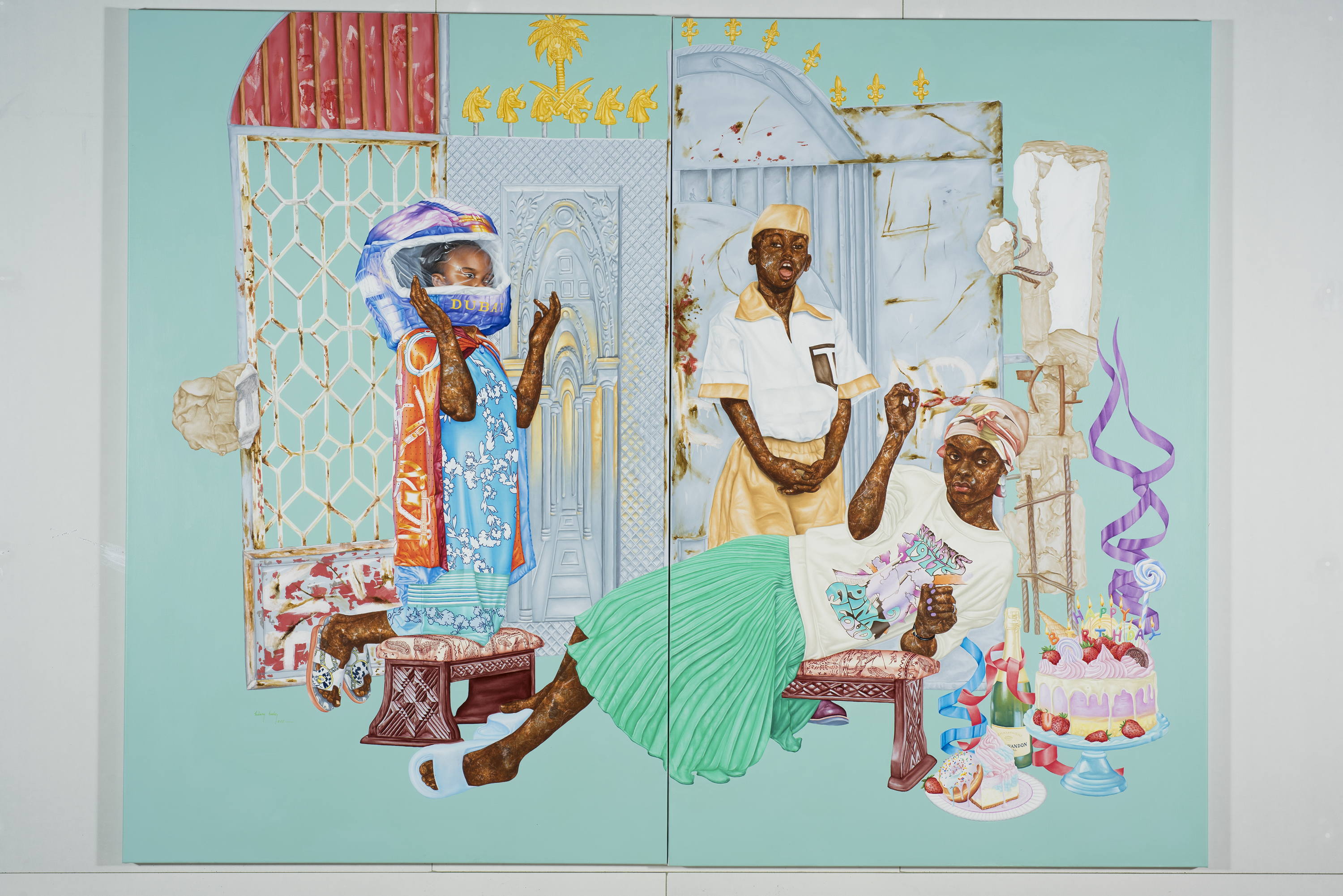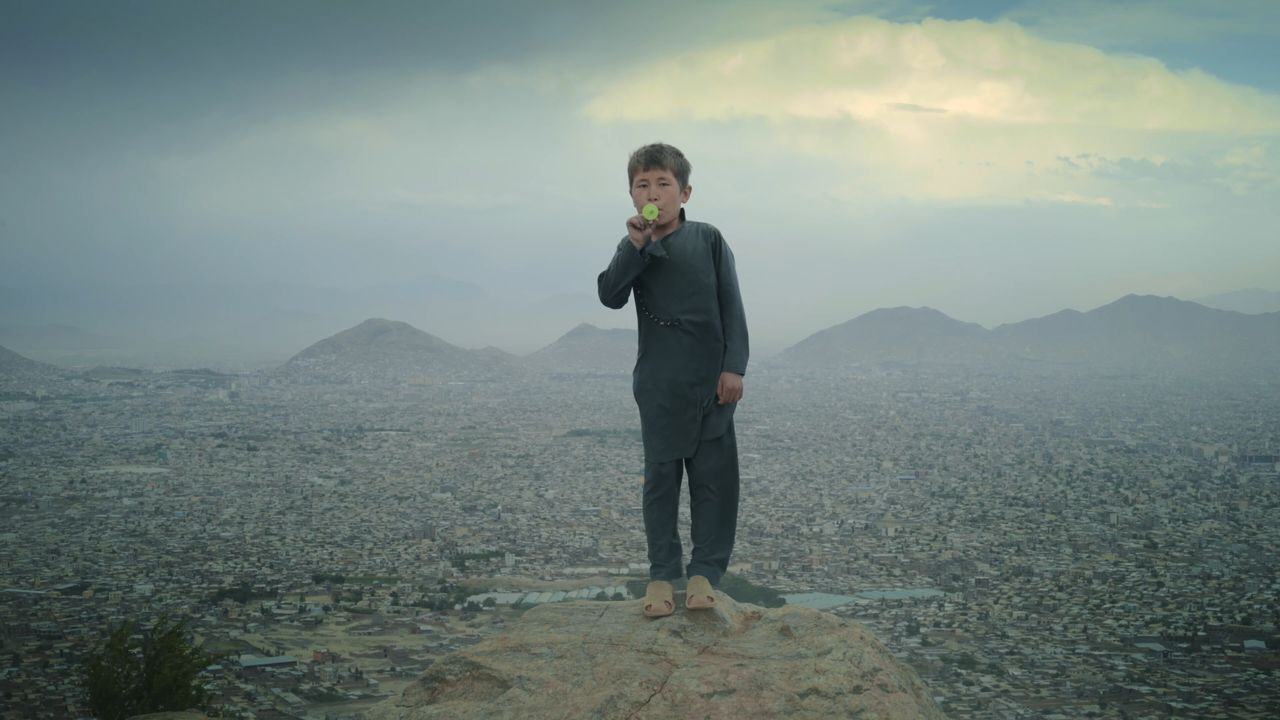Cultural Compass: Busting illusions at Africa Museum, expo trio in Ghent and a night parade

Every Sunday, Belga English picks its favourite events from the cultural agenda. This week: The Africa Museum shines a light on colonialism, Ghent’s S.M.A.K. unveils three new installations and Antwerp lights up its northern district with a cultural parade.
The Congo Panorama 1913. Colonial illusion exposed, 28 November - 27 September, Africa Museum, Brussels
The Congo Panorama 1913. Colonial illusion exposed is an exhibition that urges visitors to look again (and more critically) at one of Belgium’s most notorious colonial showpieces. Bringing together artists, experts and researchers from Congo and Belgium, the exhibition places colonial imagery in dialogue with the voices, stories and insights that were suppressed for generations.
At its centre stands the Congo Panorama, once the star attraction of the Belgian colonial section at the 1913 Ghent World Exhibition. Designed as an immersive spectacle, it promoted the supposed “benefits” of Belgium’s alleged civilising mission. Violence, forced labour and Congolese resistance were erased entirely, a striking early example of what might be referred to today as “fake news”.

Curator Patrick Mudekereza describes the difficulties at the heart of the exhibition, saying, “Our challenge was to determine how to treat the Congo Panorama. Is it a work of art, a historical record, or a simple projection screen?” The exhibition embraces the tension between these interpretations, allowing long-silenced voices of resistance and contemporary critical readings to resonate alongside one another.
Using a smaller-scale reproduction of the vast painting, the museum dismantles the panorama’s carefully crafted illusion. Far from celebrating the colonial project, the exhibition offers a counter-narrative grounded in archival materials, photographs, objects and testimonies, many from the AfricaMuseum’s own collections. These elements expose what the panorama concealed in 1913 and confront visitors with the realities behind the idyllic image, inviting audiences to draw connections between colonial propaganda and the misinformation shaping today’s world.
Three new exhibitions at S.M.A.K., 29 November - 3 May, Ghent
Three compelling exhibitions will open this week in Ghent that explore identity, politics, collaboration and the power of art to reflect and challenge our world.

Aziz Hazara: Bow Echo marks the museum’s first presentation of this immersive video installation, donated to S.M.A.K. in 2022. Across five large screens, Hazara (b. 1992, Wardak, Afghanistan) captures boys climbing a wind-battered rock near Kabul, reaching the summit to play the kazoo. The delicate, piercing notes juxtaposed with the harsh landscape create a poetic reflection on the brutal realities of war, trauma, and resilience.

Narcisse Tordoir: Fake Barok presents the Belgian artist’s monumental 2016 work in a new installation, alongside recent pieces. Referencing the Baroque, Tordoir (b. 1954, Mechelen) confronts today’s refugee, war and climate crises with layered image montages that merge press photographs and his own staged images. The result is a striking tableau that displays the tension between history and contemporary reality. It invites viewers to reconsider the role of painting in addressing the pressing issues of our time.

S.M.A.K. Bouge celebrates ten years of participatory art with an exhibition centred on encounters and collaboration. In two dedicated rooms, long-standing and new partners present projects, activities and creative interventions, while a third space features selected works from the collection curated by the Cultureghem “Dreamteam,” a volunteer group dedicated to welcoming and connecting communities through shared cultural and social experiences.
Noorderlicht, 27 November, Antwerp
The vibrant heart of Antwerp’s 2060 neighbourhood will come alive, illuminated by an artistic trail that brings the community together. Now in its ninth edition, this year’s Noorderlicht project shines a spotlight on the theme Stemmen (Voices), a concept rich with meaning, from democratic participation and the tuning of an instrument to the many voices that shape a community.
“This parade brings together the diversity of the arts and the social diversity of the neighbourhood, and they interact with each other,” says Pascale De Groote, general director of AP University College.
Visitors who wish to brave the cold in order to connect, can choose from several routes, each dotted with artistic stops created by emerging talents and local residents alike. The walk begins at the GO! Royal Athenaeum at 6pm and winds through the neighbourhood until 9pm, ending at the Stuivenberg site, where the festivities continue with a lively community party.
Young artists will present an eclectic programme spanning visual art, opera, experimental classical music, chanson, contemporary dance, folk traditions, world music, photography, theatre, spoken word and more. Residents, neighbourhood organisations and community groups from 2060 are also contributing their own projects, from workshops and collaborative creations to wall paintings, video reports, crocheted blankets and portrait sessions in local care homes. A neighbourhood photography project will capture and showcase the people and places that define 2060.
Ongoing events
Antwerp
Women’s Business / Business Women
Donas, Archipenko & La Section d'Or: Enchanting Modernism
GIRLS: On Boredom, Rebellion and Being In-Between
Eugeen Van Mieghem: City in Motion
Early Gaze: Unseen Photography From the 19th Century
Danial Shah: Becoming, Belonging and Vanishing
Magritte: La ligne de vie
Brussels
Brussels, la Congolaise
Loisirs-Plezier: Brussels 1920-1940
John Baldessari: Parables, Fables and Other Tall Tales
MAURICE: Tristesse et rigolade
Fire
Luz y sombra: Goya and Spanish Realism
Ghent
Beauty as Resistance
Fairground Wonders
Stephan Vanfleteren: Transcripts of a Sea
Marc De Blieck: Point de voir
(Un)ShameMonique Gies - Inside Views
Hasselt
Rococo Reboot
Michael Beutler
Kortrijk
Rekindling
Leuven
Ecstasy & Orewoet
Grace Schwindt: A History of Touch
(MOH)
#FlandersNewsService | Noorderlicht, Antwerp © PHOTO AP UNIVERSITY OF APPLIED SCIENCES
Related news


